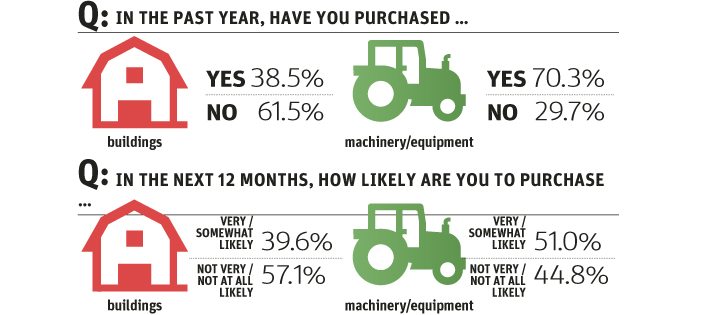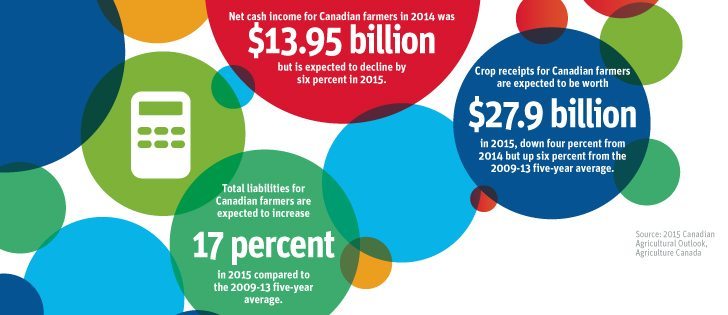In December 2014, subscribers to The Western Producer, Country Guide and other publications of Glacier FarmMedia were invited to participate in an online Ipsos survey of farmer attitudes and business outlooks. Participants shared some interesting insights about farmers’ market perceptions, attitudes, needs and plans.
Farmers in Western Canada have a weakly optimistic view of the current farm economy and are even less positive about economic prospects over the next 12 months.
However, a significant number of growers are still confident in their own ability to weather tough times on the farm and many are planning to increase their landholdings or make major capital purchases in the next year.
Read Also

Stacking Canada up on gene editing livestock
Canada may want to gauge how Argentina and other countries have approached gene editing in livestock and what that has meant for local innovation.
These were some of the key findings from an online survey of Canadian farmers conducted late last year.
The Canadian Agricultural Business Outlook was conducted by Ipsos for The Western Producer. Other collaborators in the survey included Country Guide, RBC, accounting firm MNP and law firm Miller Thompson.
The survey was conducted in December and generated responses from more than 450 subscribers to the Producer and affiliate publications owned by Glacier FarmMedia.
Nearly 370 survey respondents (81 percent) were from Manitoba, Saskatchewan and Alberta.
“Farmers have a weekly positive view of the ag economy and are somewhat less positive going forward 12 months (but) … they are relatively confident in themselves, understanding that they are in what could be a challenging market … period,” the survey concluded.
“Perhaps part of the farmers’ reason for confidence in themselves is that they have been retooling.”
The survey found that farmers have been investing in land, buildings and machinery over the past few years and consider themselves well-positioned despite the expectation of lower commodity prices and a general slow-down in the farm economy.
“This investment in land and buildings over the past 24 months builds on what seems to have been occurring, at least anecdotally, over the past five or six years,” the survey said.
“There is an expectation that this will continue in the next 12 months.… There is broad confidence in making capital purchases.”
Al Mussel, an agricultural economist and lead researcher with Agri-Food Economic Systems, said the survey uncovered interesting information about prairie farmers’ attitudes.
Livestock producers have benefitted from a strong market during the past year, while grain and oilseed producers have been dealing with declining commodity prices, Mussel said.
Nevertheless, grain and oilseed growers remain cautiously optimistic.
Nearly one-quarter of survey respondents said they were “somewhat likely” to buy more land in the next 12 months, 51 percent said they were likely to buy machinery in the coming year, 40 percent said they expected to invest in buildings and 23 percent said they expected to invest in trucks or transportation equipment.
The desire to invest in land and other farm assets was higher among farmers who reported sales of more than $1 million a year.
“I was quite encouraged by the level of optimism that farmers had, both currently and going 12 months out,” said Mussel, who helped design the survey and analyze the results.
“We know some of the things that have been framing the mindset of farmers. Grain and oilseed prices have come down significantly compared to the last few years, so you would expect that farmers would be starting to think about cutting costs, austerity and those sorts of things. But they were pretty optimistic, all things considered.”
Economic conditions during the first month of 2015 should serve to bolster farm confidence even further, he added.
Fuel costs, which comprise a significant portion of overall production costs on western Canadian farms, have come down significantly since the survey was conducted.
The value of the Canadian dollar has also dropped more than 10 percent in the past two months, falling from US 88 cents Dec. 1, 2014, to less than 79 cents Feb. 1, 2015.
A lower Canadian dollar usually means stronger export sales for the Canadian agriculture industry, but it also makes imported goods more costly for farmers.
In late January, the Bank of Canada cut its prime lending rate by .25 percent, which could provide additional relief to growers who borrow to cover annual operating costs or make capital investments on their farms.
Contact brian.cross@producer.com
















